
The Majestic Mt. Pulag: Roof of Luzon
Discover Mt. Pulag, Luzon’s highest peak, renowned for its stunning sea of clouds, diverse ecosystems, and rich cultural heritage.
Mt. Pulag, standing at 2,926 meters, is the highest peak in Luzon and the third highest in the Philippines. Known for its breathtaking sea of clouds, it offers a surreal sunrise view that leaves hikers in awe. The mountain is home to diverse flora and fauna, including rare species like the dwarf bamboo and the Philippine deer. The trek to Mt. Pulag is an adventure through mossy forests, grasslands, and pine-covered trails. The Ambangeg trail is the most popular and easiest route, making it accessible even for beginners. For those seeking more challenge, the Akiki and Tawangan trails offer steeper climbs and more rugged terrain. Local folklore and traditions add a rich cultural dimension to the journey. The Ibaloi people consider Mt. Pulag sacred, believing it to be the resting place of their ancestors' spirits. Visitors are encouraged to respect local customs, such as seeking permission before entering certain areas and observing quietness at the summit.
Local tips in Mt. Pulag
- Acclimatize properly before the trek to avoid altitude sickness.
- Bring warm clothing as temperatures can drop drastically at the summit.
- Secure permits in advance, as the number of hikers is regulated.
- Hire a local guide for a safe and informative trek.
- Respect the environment by following Leave No Trace principles.
The Majestic Mt. Pulag: Roof of Luzon
Mt. Pulag, standing at 2,926 meters, is the highest peak in Luzon and the third highest in the Philippines. Known for its breathtaking sea of clouds, it offers a surreal sunrise view that leaves hikers in awe. The mountain is home to diverse flora and fauna, including rare species like the dwarf bamboo and the Philippine deer. The trek to Mt. Pulag is an adventure through mossy forests, grasslands, and pine-covered trails. The Ambangeg trail is the most popular and easiest route, making it accessible even for beginners. For those seeking more challenge, the Akiki and Tawangan trails offer steeper climbs and more rugged terrain. Local folklore and traditions add a rich cultural dimension to the journey. The Ibaloi people consider Mt. Pulag sacred, believing it to be the resting place of their ancestors' spirits. Visitors are encouraged to respect local customs, such as seeking permission before entering certain areas and observing quietness at the summit.
When is the best time to go to Mt. Pulag?
Iconic landmarks you can’t miss
Mt. Pulag Protected Landscape
Experience the breathtaking vistas and diverse ecosystems of Mt. Pulag, the Philippines' third-highest peak, ideal for hiking and nature lovers.

Mount Pulag
Discover the breathtaking landscapes and unique ecosystems of Mount Pulag, a stunning mountain peak in Benguet, Philippines, ideal for adventurers and nature lovers.

Mount Pulag National Park Protected Area Office
Explore Mount Pulag National Park: A breathtaking destination for nature lovers, featuring stunning landscapes, rich biodiversity, and unforgettable sunrise views.

Mt. Pulag National Park Akiki Trail Jump Off Point
Explore Mt. Pulag National Park's Akiki Trail for breathtaking views, rich biodiversity, and a magical sea of clouds experience in the heart of the Philippines.

Mount Pulag View Spot
Explore the stunning landscapes of Mount Pulag View Spot, a must-visit destination in Benguet, Philippines, for breathtaking views and rich biodiversity.

Mount Pulag Summit
Discover the breathtaking views and vibrant biodiversity of Mount Pulag Summit, a premier hiking destination in the Philippines offering a tranquil escape into nature.

Mt. Pulag Radio Tower
Discover the breathtaking beauty of Mt. Pulag Radio Tower, a premier hiking destination in the Philippines, offering spectacular views and rich biodiversity.

Unmissable attractions to see
Mines View Observation Deck
Experience breathtaking views and a taste of local culture at Mines View Observation Deck in Baguio, a must-visit destination for every traveler.

Baguio Botanical Garden
Explore the stunning Baguio Botanical Garden, a serene escape filled with diverse flora, cultural displays, and breathtaking landscapes in the City of Pines.

Wright Park
Discover the natural beauty of Baguio at Wright Park, a tranquil haven filled with lush greenery, vibrant flowers, and recreational activities.

Lion’s Head
Explore Baguio City's Lion's Head: A cultural landmark offering stunning views and rich local artistry amidst breathtaking landscapes.

Heritage Hill and Nature Park Garden (Old Diplomat Hotel)
Discover the serene beauty and rich history at Heritage Hill and Nature Park Garden, a captivating attraction in Baguio, Philippines.

Tam-awan Village
Explore the artistic heart of Baguio at Tam-awan Village, a cultural haven showcasing the heritage of the Cordillera region.

Bell Church
Experience serenity and cultural richness at Bell Church, a breathtaking Buddhist temple nestled in the hills of La Trinidad, Benguet.
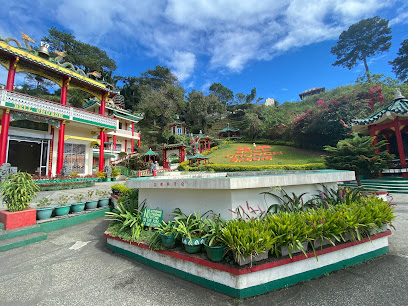
Valley of Colors
Explore the breathtaking beauty of the Valley of Colors, a vibrant floral paradise in Baguio, perfect for photography and serene nature experiences.

Second Highest Point: Philippine Highway System
Explore the breathtaking views and rich culture at the Second Highest Point of the Philippine Highway System in Atok, Benguet, a true gem for travelers.
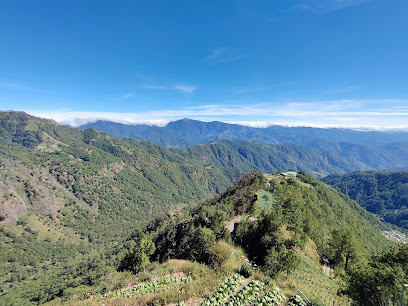
St. Francis Xavier Seminary Bamboo Educational Demo Farm (Bamboo Sanctuary)
Explore the tranquility of St. Francis Xavier Seminary Bamboo Educational Demo Farm, Baguio's eco-friendly sanctuary for nature lovers and families alike.

Mt. Pulag Protected Landscape
Explore Mt. Pulag Protected Landscape, a stunning national park in the Philippines known for its breathtaking views and rich biodiversity.

Mount Costa
Experience the stunning landscapes and vibrant gardens of Mount Costa in La Trinidad, Benguet - a haven for nature lovers and adventure seekers.
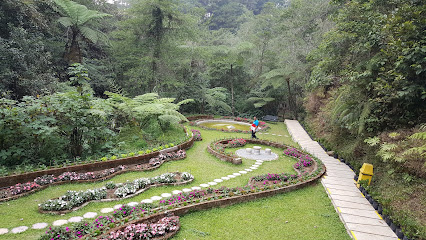
Our Lady of Lourdes Grotto
Explore the serene beauty and spiritual significance of Our Lady of Lourdes Grotto in Baguio, a peaceful escape amidst nature's wonders.

Colors of Stobosa
Explore the Colors of Stobosa, a vibrant mural village in La Trinidad that showcases artistic brilliance and local culture in every brushstroke.

Mount Pulag National Park Protected Area Office
Explore Mount Pulag National Park in Benguet, Philippines—a stunning paradise of biodiversity, breathtaking views, and unforgettable adventures.

Essential places to dine
The Farmer's Daughter Restaurant
Experience authentic Filipino cuisine amidst breathtaking views at The Farmer's Daughter Restaurant in Baguio.

The Barn
Experience the best of Baguio's culinary scene at The Barn - where fresh local ingredients meet rustic charm.

Via Von Joy Restaurant and Cafe w/ Viewdeck
Experience authentic Filipino cuisine with stunning views at Via Von Joy Restaurant and Cafe in Itogon.

Ricken Star
Discover Ricken Star: A charming restaurant in Atok offering delicious local cuisine amidst stunning mountain views.

Lolo Cancio’s Resto & Café
Discover authentic Filipino cuisine at Lolo Cancio's Resto & Café in Bokod, Benguet - where every dish tells a story.

Pedros (pizza, pasta & sides)
Discover Pedros in Lagawe: A delightful restaurant offering pizza, pasta & more amidst beautiful Ifugao scenery.
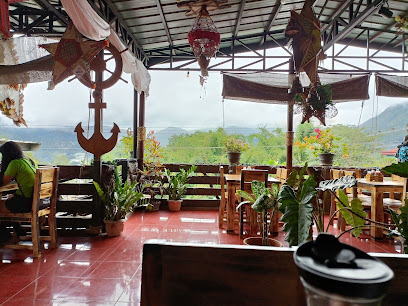
Loyung's Restaurant
Discover authentic Cordilleran flavors at Loyung's Restaurant on Halsema Highway – where every meal is a journey through Benguet's culinary heritage.

Shuby's Mt. Pulag cafe
Experience delicious burgers and fresh juices at Shuby's Mt. Pulag Cafe while enjoying breathtaking views in La Trinidad, Benguet.

Original Chef Lutong Pangbarangay
Discover authentic Filipino cuisine at Original Chef Lutong Pangbarangay in Baguio – where every meal is a celebration of local flavors.

Mama's Table Private Dining
Experience authentic local flavors in a cozy setting at Mama's Table Private Dining in La Trinidad.

Al's Restaurant
Experience authentic Filipino flavors at Al's Restaurant in Buguias - where generous portions and fast service create unforgettable meals.

Galilea Cafe and Restaurant
Discover Galilea Cafe: Where Local Flavors Meet Breathtaking Views in Atok's Scenic Hills.

King's Restaurant
Experience authentic Filipino cuisine at King's Restaurant in Ifugao – where tradition meets taste in every dish.

Halsema Restaurant
Experience authentic local cuisine while soaking in stunning mountain views at Halsema Restaurant along Halsema Highway.
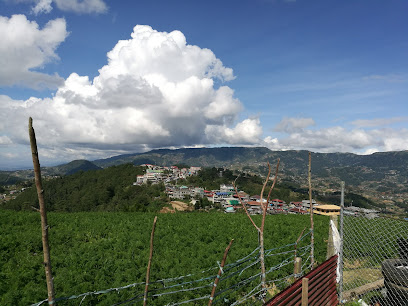
Igorot Taste
Discover authentic Filipino flavors at Igorot Taste in Bokod, Benguet – a culinary journey through Cordillera's rich heritage.

Markets, malls and hidden boutiques
Mt. Pulag Protected Landscape
Explore Mt. Pulag Protected Landscape, a breathtaking national park in the Philippines, famous for its stunning views and diverse ecosystems.

Mount Pulag
Discover the breathtaking beauty of Mount Pulag, a natural wonder in Benguet known for its stunning sea of clouds and rich biodiversity.

Mt. Pulag
Explore the breathtaking Mt. Pulag, a hiker's dream with stunning views, diverse ecosystems, and a mesmerizing sea of clouds in the heart of the Philippines.

Me-An MG Store and Homestay
Experience the authentic charm of Benguet at Me-An MG Store and Homestay, where local crafts meet warm hospitality amidst stunning landscapes.

Kabayan Weaving
Experience the vibrant culture of Benguet at Kabayan Weaving, where traditional craftsmanship meets unique artisanal textiles.

Yong Yongls Store
Explore the delightful experience of shopping at Yong Yongls Store, a local gem in Bambang, Nueva Vizcaya, filled with fresh groceries and cultural treasures.

RB General Merchandise
Discover a treasure trove of literature at RB General Merchandise in Bokod, Benguet, where every book tells a story waiting to be explored.

Upper Lanas Loo
Experience the local flavors and vibrant culture at Upper Lanas Loo, the grocery store in Buguias, Benguet, perfect for tourists seeking authentic culinary delights.

Sawac-Aguilar Store
Discover local flavors and essential supplies at Sawac-Aguilar Store, your friendly convenience shop in the heart of Buguias, Benguet.

Mt. Pulag Tent And Dry Goods
Discover the perfect outdoor gear and local apparel at Mt. Pulag Tent And Dry Goods, your essential stop for adventure in Benguet.

Rognase Store
Discover the authentic tastes and local goods of Bokod, Benguet at Rognase Store, a charming grocery store showcasing regional flavors.

Kollebeng store and dry goods
Explore Kollebeng Store for an authentic Asian grocery experience in Buguias, Benguet, filled with local flavors and culinary treasures.

Mugo's Corner
Discover the heart of Tinoc at Mugo's Corner, a charming general store offering local goods, warm hospitality, and a glimpse into Ifugao culture.

North Stroll Boutique
Discover unique gifts and local crafts at North Stroll Boutique in La Trinidad, your go-to destination for stylish accessories and souvenirs.
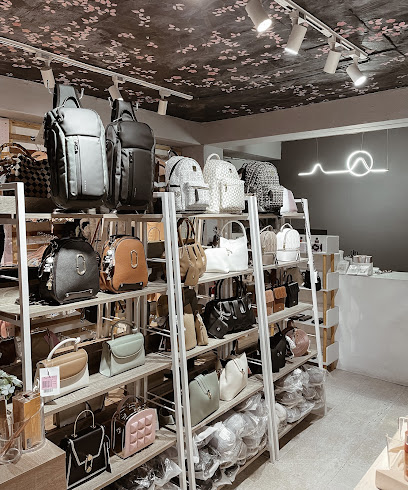
bullong store
Discover local crafts and authentic Ifugao culture at the Bullong Store in Tinoc, a charming shop offering unique souvenirs and delicacies.

Essential bars & hidden hideouts
Rumours Bar and Restaurant
Experience the vibrant atmosphere and delightful cuisine at Rumours Bar and Restaurant in Baguio, a perfect spot for relaxation and socializing.

One Piece Restobar
Discover a unique dining experience at One Piece Restobar in Baguio, a gastropub offering a blend of local flavors and international cuisine.

Padi's Point Baguio Branch
Discover the lively nightlife at Padi's Point Baguio Branch, where delicious food and refreshing drinks meet a vibrant atmosphere.

Primo Point Bar and Restaurant
Experience the best of Baguio's culinary scene at Primo Point Bar and Restaurant, where local flavors meet vibrant nightlife.

Smoke and Barrel
Experience Baguio's nightlife at Smoke and Barrel, where great drinks meet live music in a cozy setting, offering stunning views and a vibrant atmosphere.

Kalaleng Restobar
Experience the lively atmosphere and local flavors at Kalaleng Restobar, a must-visit bar in Baguio's vibrant nightlife scene.

Route 83 Restobar
Experience the vibrant atmosphere and stunning views at Route 83 Restobar, a charming bar in Itogon, Benguet, perfect for relaxation and local culture.

Bar Tech Resto Bar
Experience the best grilled dishes in the cool embrace of Baguio at Bar Tech Resto Bar, where flavor meets a friendly atmosphere.
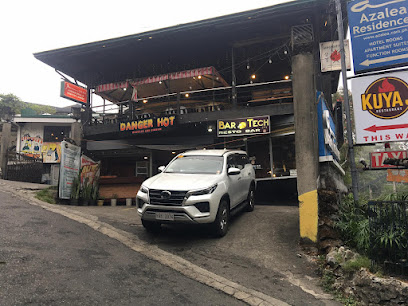
New Vegas Bar and Resto
Discover the vibrant nightlife at New Vegas Bar and Resto in Baguio, where great drinks, delicious food, and stunning views come together.

Yabow garden
Discover tranquility at Yabow Garden, a picturesque bar in Bokod, Benguet, offering refreshing drinks amidst stunning mountain views.

PUBJ
Discover PUBJ in Baguio - a vibrant bar blending local charm with stunning views and a fantastic drink selection.

POSE RESTO BAR
Experience the vibrant nightlife and delicious cuisine at Pose Resto Bar in Baguio, where local flavors meet warm hospitality.

Carulla’s Bar and Resto
Discover Carulla’s Bar and Resto in Baguio, where vibrant nightlife meets local flavors and welcoming ambiance.

Brod Alas Resto Bar
Experience the perfect blend of local flavor and breathtaking views at Brod Alas Resto Bar in Baguio.

Saskia store-billiards &v.oke bar
Experience the lively atmosphere of Saskia Store, a premier billiards and karaoke bar in Tuba, Benguet, perfect for tourists seeking fun and entertainment.

Local Phrases about Mt. Pulag
-
- HelloKamusta
[ka-mus-ta] - GoodbyePaalam
[pa-a-lam] - YesOo
[o-o] - NoHindi
[hin-di] - Please/You're welcomeMangyaring
[man-gya-ring] - Thank youSalamat
[sa-la-mat] - Excuse me/SorryPasensya na
[pa-sen-sya na] - How are you?Kamusta ka?
[ka-mus-ta ka] - Fine. And you?Mabuti. Ikaw?
[ma-boo-ti. i-kaw] - Do you speak English?Nagsasalita ka ba ng Ingles?
[nag-sa-sa-li-ta ka ba ng ing-gles] - I don't understandHindi ko maintindihan
[hin-di ko main-tin-di-han]
- HelloKamusta
-
- I'd like to see the menu, pleaseGusto kong makita ang menu, pakiusap
[gus-to kong ma-ki-ta ang me-nu, pa-ki-u-sap] - I don't eat meatHindi ako kumakain ng karne
[hin-di a-ko ku-ma-ka-in ng kar-ne] - Cheers!Mabuhay!
[ma-boo-hay] - I would like to pay, pleaseGusto kong magbayad, pakiusap
[gus-to kong mag-ba-yaad, pa-ki-u-sap]
- I'd like to see the menu, pleaseGusto kong makita ang menu, pakiusap
-
- Help!Tulong!
[tu-long] - Go away!Lumayo ka!
[lu-ma-yo ka] - Call the Police!Tumawag sa Pulis!
[tu-ma-wag sa pu-lis] - Call a doctor!Tawag ka ng doktor!
[ta-wag ka ng dok-tor] - I'm lostNawawala ako
[na-wa-wa-la a-ko] - I'm illMay sakit ako
[may sa-kit a-ko]
- Help!Tulong!
-
- I'd like to buy...Gusto kong bumili ng...
[gus-to kong bu-mi-li ng] - I'm just lookingNagtitignan lang ako
[nag-ti-tig-nan lang a-ko] - How much is it?Magkano ito?
[mag-ka-no i-to] - That's too expensiveMasyadong mahal 'yan
[ma-sya-dong ma-hal 'yan] - Can you lower the price?Pwede bang ibaba ang presyo?
[pu-we-de bang i-ba-ba ang pres-yo]
- I'd like to buy...Gusto kong bumili ng...
-
- What time is it?Anong oras na?
[a-nong o-ras na] - It's one o'clockAlas-una na
[a-las-u-na na] - Half past (10)Ala-una y medya
[a-la-u-na y med-ya] - MorningUmaga
[u-ma-ga] - AfternoonHapon
[ha-pon] - EveningGabi
[ga-bi] - YesterdayKahapon
[ka-ha-pon] - TodayNgayon
[nga-yon] - TomorrowBukas
[bu-kas] - 1Isa
[i-sa] - 2Dalawa
[da-la-wa] - 3Tatlo
[tat-lo] - 4Apat
[a-pat] - 5Lima
[li-ma] - 6Anim
[a-nim] - 7Pito
[pi-to] - 8Walo
[wa-lo] - 9Siyam
[si-yam] - 10Sampu
[sam-pu]
- What time is it?Anong oras na?
-
- Where's a/the...?Nasaan ang...
[na-sa-an ang] - What's the address?Anong address?
[a-nong address] - Can you show me (on the map)?Pwede mo ba akong ipakita (sa mapa)?
[pu-we-de mo ba a-kong i-pa-ki-ta (sa ma-pa)] - When's the next (bus)?Kailan ang susunod na (bus)?
[kai-lan ang su-su-nod na (bus)] - A ticket (to ....)Isang tiket (papuntang ...)
[i-sang ti-ket (pa-pun-tang)]
- Where's a/the...?Nasaan ang...
History of Mt. Pulag
-
Mt. Pulag has been a sacred site for the indigenous Ibalois and Kalanguya people for centuries. Known as 'Playground of the Gods,' it is considered a holy place where ancestral spirits reside. Rituals and offerings are often performed to honor these spirits and seek blessings for bountiful harvests and protection. The cultural significance of Mt. Pulag to these indigenous groups is deeply rooted in their traditions and spiritual beliefs.
-
During the Spanish colonial era in the Philippines, Mt. Pulag remained largely untouched by Spanish influence due to its remote location and the fierce independence of its indigenous inhabitants. However, Spanish missionaries made several attempts to convert the local population to Christianity. These efforts were met with resistance, and the mountain continued to be a refuge for indigenous traditions and beliefs.
-
Mt. Pulag played a role during World War II as a strategic location. The dense forests and rugged terrain provided a natural cover for Filipino guerrillas fighting against Japanese occupation. Local guides who knew the mountain intimately assisted the guerrillas, using the landscape to their advantage for ambushes and supply routes. The mountain's challenging environment was both a sanctuary and a battleground during this tumultuous period.
-
Mt. Pulag was officially declared a national park in 1987 to protect its unique biodiversity and cultural heritage. The establishment of Mount Pulag National Park was a significant step towards conservation, aiming to preserve the delicate ecosystems and the traditions of the indigenous people. The park encompasses various habitats, including mossy forests, grasslands, and dwarf bamboo groves, making it a haven for numerous endemic species.
-
In recent years, Mt. Pulag has become a popular destination for both local and international tourists. The mountain offers breathtaking views, including the famous 'sea of clouds' visible at dawn. Ecotourism initiatives have been developed to promote sustainable tourism while preserving the cultural and natural heritage of the area. Visitors are encouraged to respect the sacred sites and follow guidelines to minimize their environmental impact. This balance between tourism and preservation reflects a growing awareness of the need to protect Mt. Pulag's unique cultural and natural landscape.
Mt. Pulag Essentials
-
Mt. Pulag is located in the Cordillera Mountain Range on the island of Luzon in the Philippines. The nearest major city is Baguio, which is approximately 80 kilometers away. From Manila, you can take a bus to Baguio, a journey that typically takes around 6-7 hours. From Baguio, you can hire a private van or take a jeepney to the Mt. Pulag National Park Visitor Center in Kabayan, Benguet. The trip from Baguio to Kabayan takes around 3-4 hours.
-
Within the Mt. Pulag area, transportation is relatively limited. Most visitors hire a private vehicle or join a guided tour that includes transportation. Jeepneys and tricycles are the most common forms of local transport, but their routes can be irregular. Renting a car or hiring a local driver can provide more flexibility for exploring the surrounding areas.
-
The official currency in the Philippines is the Philippine Peso (PHP). Credit cards are accepted in some hotels and restaurants in major cities like Baguio, but it is advisable to carry cash, especially when traveling to rural areas like Mt. Pulag. ATMs are available in Baguio, so it is wise to withdraw sufficient cash before heading to Mt. Pulag.
-
Mt. Pulag is generally a safe destination for tourists. However, as with any travel destination, it is important to take standard precautions. Avoid walking alone at night in unfamiliar areas and keep an eye on your belongings in crowded places. There are no specific high-crime areas targeting tourists around Mt. Pulag, but always stay vigilant and aware of your surroundings.
-
In case of emergency, dial 911 for immediate assistance. The nearest medical facilities are in Baguio, so it is advisable to have travel insurance that covers medical emergencies. For minor health issues, bring a basic first aid kit and any necessary medications. Local guides are trained to handle emergencies while on the trek, and it is recommended to follow their instructions.
-
Fashion: Do wear appropriate clothing for hiking and cold weather, as temperatures can drop significantly at higher altitudes. Avoid wearing revealing clothing. Religion: Do respect local customs and traditions. The indigenous people of the area, the Ibaloi, have sacred sites, so always ask for permission before entering these areas. Public Transport: Do be respectful and give up your seat to elderly passengers. Don't eat or drink on public transport. Greetings: Do greet people with a smile and a simple greeting like 'Hello' or 'Kumusta'. Eating & Drinking: Do try local delicacies and accept food offerings graciously. Don't refuse hospitality, as it is considered impolite.
-
To experience Mt. Pulag like a local, consider staying in a homestay in Kabayan, where you can learn about the local culture and traditions. Engage with local guides, who are often knowledgeable about the area's history and natural features. Visit the Tawangan Village to see traditional Ibaloi houses and meet the indigenous people. For a unique experience, join a sunrise trek to the summit of Mt. Pulag, where you can witness the 'sea of clouds' phenomenon.
Nearby Cities to Mt. Pulag
-
Things To Do in Sagada
-
Things To Do in Vigan
-
Things To Do in Angeles City
-
Things To Do in Ilocos Norte
-
Things To Do in Subic
-
Things To Do in Manila
-
Things To Do in Tagaytay
-
Things To Do in Batanes
-
Things To Do in Legazpi
-
Things To Do in Boracay
-
Things To Do in Cebu City
-
Things To Do in Puerto Princesa
-
Things To Do in Bohol
-
Things To Do in Palawan
-
Things To Do in Camiguin








